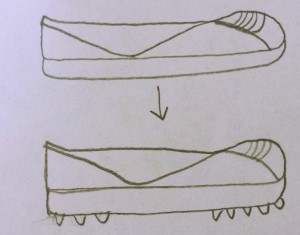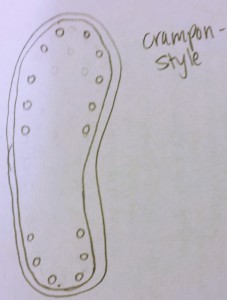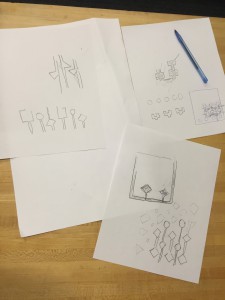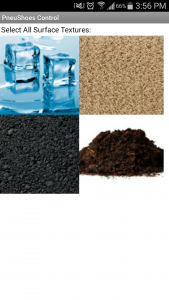PneuShoes: Dynamic Traction Control through Pneumatics
The Shoe Lovers:
Aubrey Colter, Manisha Mohan, Andrew Ringler, Udayan Umapathi
Project Overview
Introduction
How many pairs of shoes do you own?
There are many reasons why we own many pairs of shoes. We have shoes for exercising, working, playing, dressing up, feeling comfortable, managing different seasons, etc. We change shoes a lot.
We encounter many different floor and ground textures throughout our day-to-day. But most days, we don’t carry extra pairs of shoes for those different textures because shoes are bulky. Furthermore, it usually is not practical to change our shoes when encountering a new surface, such as a slippery wet floor in the office or an icy sidewalk in the winter.
Problem: Our shoes do not change traction based on the surface they are touching.
Problem Discussion
There are many common scenarios where a shoe that changed its traction based on the surface it is touching would be practical.
- Winter Safety: Increased shoe traction can prevent slipping on icy surfaces. This is particularly a concern for pregnant women and elderly people who are at a high risk for serious injury if they slip and fall.
- Outdoor Activities: Additional shoe traction can improve grip on varying terrains. For example, hikers encounter paved and dirt paths, and need varying levels of traction depending on the surface and the incline of the path. Rock climbers need more traction in places where they do not have a large or solid hold on the rock surface.
- Indoor Floor Surfaces: Indoor flooring varies from wood to tile to carpet. Shoes that have good friction on carpet may be too slick to walk safely on polished wood. Floors can be wet or at an incline which increases the need for additional traction to avoid slipping.
Solution: Design pneumatic shoe soles that dynamically change traction based on environment sensing.
Design
Sketches
1) Cleat-style pneumatically actuated spikes come out of shoe.
2) Pneumatically actuated coils
3) Different traction patterns
Preliminary Designs and Fabrication Iterations (GIFs)
We created our molds using DragonSkin 10. Initially, we experimented with using balloons to create air chambers in the silicon.
We also experimented with layering different traction patterns.
Final Fabrication
Finally, we settled on using mylar sheets, laser cut in different patterns, to create the air chambers.
GIF of mylar fabrication process
Prototype GIFs
Basic sole inflation:
Inflation on shoe:
Demonstration of increased traction on shoe:
Use case: Environment sensing and dynamic traction
Future Work
We know our work with changing traction can be applied to other fields and is not limited to shoes. We see direct application for the following:
- Rubber gloves: Glass dishes are very slippery when wet and soapy — and they will break if you drop them. Other dishes are less slippery (and less likely to break) and require less grip. We envision gloves that could adapt their grip based on the type of dish the wearer is holding.
- Tires for cars and bicycles: Road and trail conditions can change suddenly, especially in the case of inclement weather. We envision designing tires for cars and bicycles that change their traction dynamically based on environmental factors (such as weather, road condition, and speed). Furthermore, we think combining different traction patterns on the same tire would give more or less traction when used together or separately.
Currently, it is unlikely that a computer can predict changes in surface texture. We envision a smartphone app for Pneu Shoe wearers that allows them to control the traction of the shoe, based on what they can observe about their environment. Tapping one of these four basic images would adjust the traction of the shoes to provide better grip on these surfaces.
App prototype homescreen:
Related Work
Jifei Ou and New Balance: Jamming Shoe
GeckSkin, Crosby et al. UMass Amherst
Artificial Setae with Carbon Nanotubes Zhong Lin Wan et al. Georgia Tech
The Reebok Pump
Heelys
Retractable Skates
Sports cleats
In our research, we did not encounter previous work relating to changing the outer sole of the shoe.
















